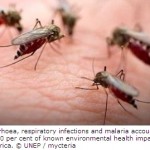The report recommends action in three distinct areas:
- Regulatory Frameworks: National efforts to promote the establishment of an appropriate legal and regulatory framework to control the manufacture, import, export, sale and use of lead paints and products coated with lead paints should be encouraged. The evidence of paints with very low lead contents coexisting in the market with equivalent lead paint suggests there should be few economic barriers to the introduction of legal or regulatory controls and the elimination of lead paint.
- Public Awareness: There is a need for information campaigns in countries where results show the presence of lead paint on the market. These campaigns should inform the public about the hazards of lead exposure, especially in children; the presence of lead decorative paints for sale and use on the national market; lead paint as a significant source of childhood lead exposure; and availability of technically superior and safer alternatives.
- Voluntary Action and Labeling: Paint manufacturers in countries that lack a well-enforced national lead paint control regime are encouraged to eliminate lead compounds from their paint formulations, especially of those paints likely to contribute to lead exposure in children and others. Paint manufacturers also are encouraged to consider voluntary participation in programmes that provide third party paint certification that no lead has been added to their paint, and to label products in ways that help consumers identify paints that do not contain added lead.
Click here to read/download the Full Report – “Lead in Enamel Decorative Paints”.
Source: UNEP.
Notes:
Lead in paint is a problem because painted surfaces deteriorate with time and when disturbed. If there is lead in the paint, the lead then contaminates household dust and soils surrounding the home. Children ingest lead from dusts and soils during normal hand to mouth behavior. Damage to children’s intelligence and mental development occurs, even when there are no obvious or clinical signs of lead poisoning. Recent World Health Organization (WHO) guidelines indicate that there is no known acceptable lead exposure level for children.
When children are exposed to lead, this tends to decrease their performance in school and their lifelong productivity as part of the national labor force. A recent study investigated the economic impact of childhood lead exposure on national economies and estimated a total cumulative loss of $ 977 billion international dollars per year for all low and middle income countries. The estimated economic loss in Africa is $ 134.7 billion dollars or 4.03 per cent of Gross Domestic Product (GDP).
Its use creates a health problem for many years into the future. Even in countries that have banned leaded paint decades previously, such paint continues to be a source of exposure until it is finally stripped and replaced. The cost of replacing lead paint means that people living in older, poorly-maintained housing are particularly at risk, and this disproportionately affects economically-deprived communities.















